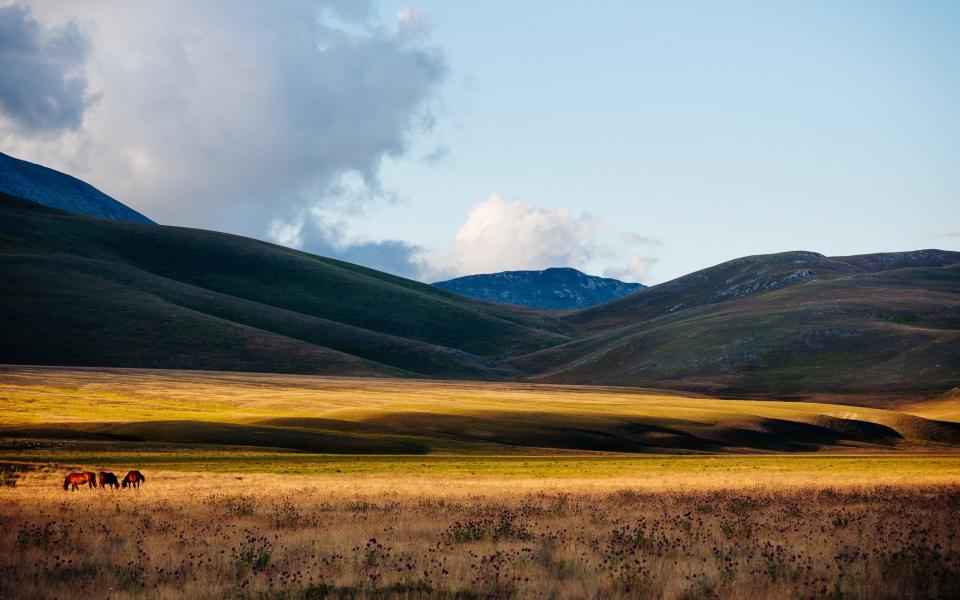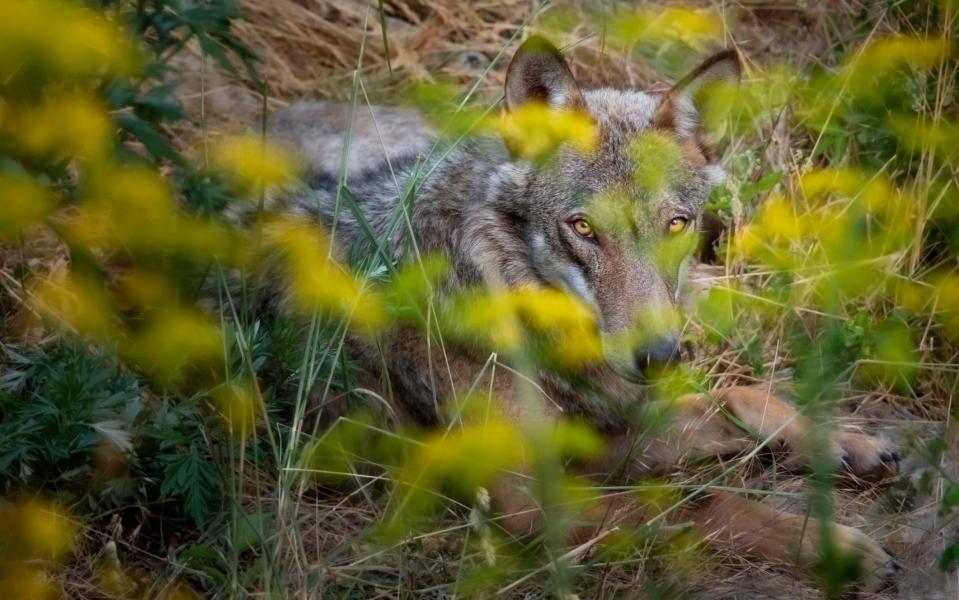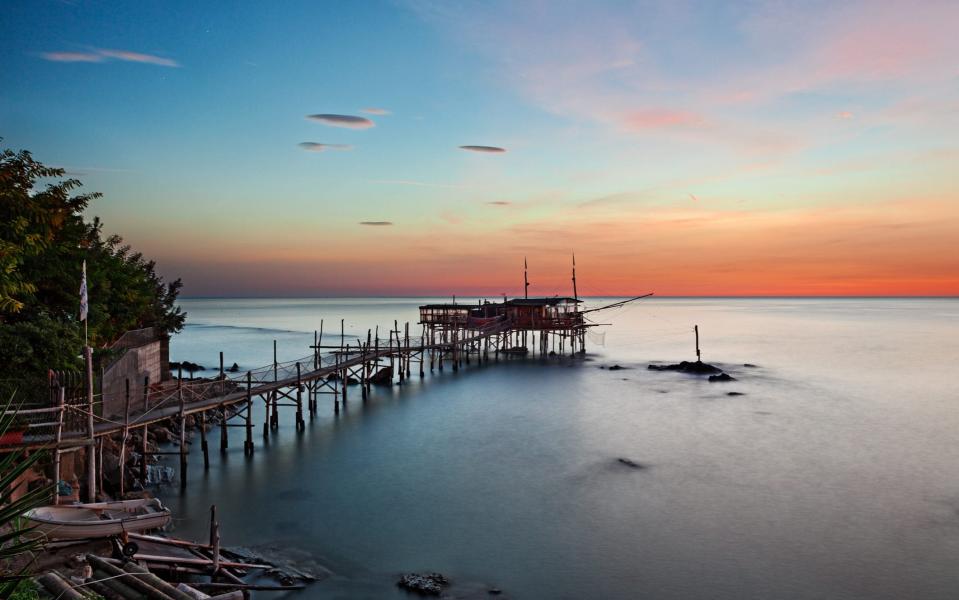Italy has welcomed visitors since ancient times. But not all of Italy: Some regions have remained impervious to the Big Tourists of the past and the Instagrammers of today. For example, who visits the Abruzzo region, east of Rome and south of the Marche?
The answer is very little; But why is it so secret? On the one hand, poverty, and on the other hand, the vast wilderness of the mountains. The region was too high and isolated for its rich history and medieval trade, whose vineyards and olives nourished the cities and art of Tuscany, Umbria and Sicily.
But things are changing, albeit slowly (homes here can still be bought for under 10,000 euros). Travelers are finally learning that its mountains, still frequented by wolves and bears, are Italy’s most beautiful outside the Alps, that its coasts are wonderfully wild in places, and that many of its ancient villages are timeless and traditional in the best sense. While visitor infrastructure is still in its infancy (part of the area’s charm, of course) new destination hotels are slowly opening and, as always in Italy, the food is excellent.
The new Tuscany? New Umbria? Not really. So is there a place to visit now before everyone else? Definitely.
landscapes
Magnificent mountain views are the main attraction of Abruzzo. The Apennines, the rocky spine of the Italian peninsula, reach their highest point here at the summit of Gran Sasso (9,553 ft/2,912 m) and are still home to one of Europe’s southernmost glaciers.


Gran Sasso is also the name given to one of the three huge massifs in the region; the other two are Monti della Laga in the north and Maiella in the south. All three have national park status, as does Parco Nazionale d’Abruzzo, the fourth residential area in the western wing of the region.
For those who know only the more benign aspects of the Apennines in Tuscany, Umbria or Liguria, it is difficult to appreciate the size of the Abruzzo mountains or their impenetrable wildness. Wolves and even bears still roam here, and the region’s vast, beautiful reaches can only be reached on foot, following ancient transhumance routes, or by a patient but immensely rewarding journey along high mountain roads.


Many people visit Parco Nazionale d’Abruzzo partly because it is closest to Rome (81 mi/130 km via the A2 motorway and the towns of Frosinone and Sora) and partly because it is among Italy’s best-managed national parks. You’ll also find more here in the form of hotels, facilities and marked cycling and hiking trails, especially in the main centers of Pescasseroli and the smaller Opi, as well as in the beautiful, medieval Scanno just outside the park boundaries.
Travel along the beautiful road between Acquasanta Terme (only in Marche) and Teramo in Monti della Laga and consider the village of Pietracamela as a base. From here you can easily head south and ride one of the best driving roads in Europe, let alone Italy: the road known locally as “Little Tibet”, which runs from west to east under the Gran Sasso, across the vast high plains of Campo Imperatore. extraordinary view.


Visit Castel del Monte, one of the most beautiful villages in the region and located at an altitude of over 4,000 ft. It’s also a good place to stay, but drive a few miles and tiny Santo Stefano is home to one of central Italy’s quirkiest hotels, the Sextantio (doubles from around £150 with breakfast).
Alternatively, if you’re heading towards the coast (see below), head east towards Farindola, a classic little Abruzzese village with stunning views and a great dining option. Be sure to spare an hour or so to Loreto Aprutino in the east, one of the region’s most charming medieval villages.


Discover Maiella, the third of Abruzzo’s massifs; You will risk entering one of the last great wildernesses of Western Europe. There are few places to stay in the heart of the mountains; Caramanico Terme is your best bet, but Sulmona, just to the west, is Abruzzo’s most interesting large town, the birthplace of Ovid and sugared almonds, or confetti (Sulmona almonds were served for dinner). Harry and Meghan’s wedding).
It’s a town worth visiting in its own right, especially if you can make it here on a Wednesday or Saturday morning when Piazza Garibaldi hosts a great market. It’s also on a railway line, and there aren’t many of those in this mountainous region: the journey here from Rieti, via L’Aquila and especially to Castel di Sangro and beyond, is one of the most beautiful views in Italy.


Resorts and beaches
The mountains get most of the praise in Abruzzo, but the region’s long coastline provides another appeal. Many of the beaches and resorts are typical of Italy’s eastern Adriatic coast; meaning they are small, family-friendly businesses, generally close to the coast’s main rail and road links, and have good, if not outstanding, sand and hotels.
While some spots in the north are quite casual, there are two notable exceptions: the wild, majestic sand fields in the Riserva Naturale del Borsacchio north of Roseto degli Abruzzo and the Torre del Cerrano near Pineto, named after the adjacent historic defensive zone. tower.
Head towards Punta Ferruccio, south of Pescara, near Ortona – the scene of fierce fighting in 1943: It is not easily reached but is worth the effort and clothing can be extended optionally. Nearby Calata or Spiaggia del Turchino, close to San Vito Chietino, is equally wild and lovely; here the contemporary Le Chiave dei Trabocchi hotel makes a good base (doubles from around £60).
This part of the coast takes its name from the eerily beautiful trabocchi, slender wooden walkways and fishing huts built on stilts that are unique to the region.


A few miles further south, Lido di Casalbordino is another pilgrimage spot for beach enthusiasts, and the homely Finis Terrae bar is a favored spot for watching the sunset. Near Vasto, Abruzzo’s last stop before the border with Molise, two more beaches stand out: Punta Penna and Punta Aderci. Both are wild places partly protected by nature reserves.
Abruzzo also has many family-friendly Green Flag beaches.


food and wine
Like most things in Abruzzo, the region’s food is not widely known but is often outstanding. The beach has predictably good fish and seafood; especially mussels (cozze) from Vasto, often served with saffron (itself a regional specialty) or stuffed with breadcrumbs, lemon, parsley, garlic and tomato sauce.
The classic pasta is maccheroni alla chitarra (hence chitarra or “guitar”), a spaghetti-like creation made by pressing sheets of pasta with strings.
But when all is said and done, Abruzzo is a mountainous region, and it is the mountains that most color the region’s cuisine and the centuries when poverty was the main source of culinary innovation.
Mushrooms and truffles are also plentiful, as are legumes and beans, but lamb and mutton were and still are the mainstays of mountain cooking. One of the great dishes of the region – one of the great dishes of Italy – can be enjoyed on the high plains of Campo Imperatore and elsewhere (see above).
Distant windswept shepherds’ huts will sell you a piece of bread, a few roughly cut pieces of pecorino (sheep’s cheese), and a handful of arrosticini (skewers stuffed with tiny pieces of lamb and mutton) that you (or they) will grill over open fires. Eat with your fingers and don’t ask for more.


Arrosticini is also the mainstay of many mountain villages; Make a pilgrimage to Farindola and Lu Strego, a trattoria whose version has been repeatedly recognized as Abruzzo’s best.
Wine-wise, no one goes to Abruzzo to tour the region’s vineyards – for the most part, the mountains are not conducive to growing vineyards – but wherever you go, you’ll be able to drink Montepulciano d’Abruzzo, more… than a good red you’re likely to encounter at home. Trebbiano is the standard white, while Cerasuolo is a lighter red, also made from the Montepulciano grape.
But there is quality. As with “lesser” Italian wine regions such as Umbria, the post-war period saw newer, dynamic producers pioneering some world-class wines. Especially look for bottles of Pepe and Valentini, as well as CantinArte, Annona, Italo Pietrantoj, Cataldi Madonna and Valle Reale.
For more unusual regional drinks, risk a glass of ratafia, a black cherry liqueur; Aurum is a branded orange-scented brandy produced in Pescara since 1925; centerbe (literally “hundred herbs”) made from Maiella’s mountain herbs; and genziano is made from gentian root.
get there
Ryanair flies from Stansted to Pescara Airport. There are even more options available if you fly to Rome, which is a 90-minute drive from the regional capital L’Aquila.
stay there
Generally, villa companies are still planning to enter Abruzzo – often a company may only have one or two properties in the area – but check out the dedicated Abruzzo Turismo page or properties on Vrbo (formerly HomeAway) listed by owner. For more ideas on where to stay, check out our guide to the best hotels in Abruzzo.
This story was first published in March 2022 and has been revised and updated.